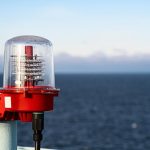4 Types of Visual Alarms Used in Marine Fire Detection
Fire emergencies at sea can escalate rapidly. In such confined and potentially high-risk environments, early warning systems are critical. While audible alarms remain essential, visual alarms serve as an equally important part of a marine fire alarm system, especially in noisy engine rooms or when crew members wear ear protection. This guide explains the various types of visual alarms used in marine vessels, their roles, and how they support overall fire safety at sea.
Why Visual Alarms Are Critical in Marine Environments
Visual alarms provide a reliable alert method in environments where audible warnings may not be heard. This is particularly relevant aboard ships where loud machinery or environmental noise can drown out sirens. These alarms enhance situational awareness and ensure that all crew members receive timely alerts, even in sound-insulated or noisy areas.
Marine regulations also support the use of visual alarms to comply with safety standards. The integration of visual signals alongside audio alerts strengthens the responsiveness of a marine fire alarm system, making the vessel safer for all on board.
- Strobe Lights
Strobe lights are among the most commonly used visual alarms on ships. These devices emit bright, flashing lights that grab attention immediately, even from a distance or in low visibility. Strobe lights are usually red or white to indicate emergencies. Their flash rate and intensity are regulated to ensure they are noticeable but not disorienting.
These lights are strategically placed throughout the vessel, such as in passageways, crew cabins, machinery spaces, and control rooms. Their visibility makes them ideal for alerting crew members who are sleeping, using equipment, or working in isolated spaces.
- Beacon Lights
Beacon lights are steady or rotating lights that signal an emergency condition without the intensity of a strobe. These are often used in combination with audio signals to indicate the type or location of a fire. Beacon lights are particularly useful in high-traffic areas or control rooms where excessive strobe lighting might be distracting or overwhelming.
The consistent glow from beacon lights helps maintain alert status while reducing the chances of panic. When linked to the main marine fire alarm system, they also help guide the crew to evacuation points or safe zones.
- LED Indicator Panels
Modern fire alarm systems aboard ships often include LED panels that offer both visual alerts and system status updates. These panels display the exact location and type of fire alarm triggered, providing essential information for crew response. Unlike general strobe lights, LED indicators offer specific details that can help responders act quickly and appropriately.
While not a direct substitute for flashing lights, LED panels complement them by offering critical data that improves coordination during emergencies. When used properly, they can streamline fire suppression efforts and reduce downtime.
- Combination Alarms (Audio-Visual Units)
Combination alarms pair sound and light in one device. These are ideal for compact spaces where separate visual and audio alarms may not fit or may not function optimally. These units operate simultaneously, ensuring maximum visibility and audibility.
Marine-grade audio-visual units resist moisture, salt corrosion, and vibration, making them well-suited for harsh sea environments. They are often installed in engine rooms, cargo holds, and electrical rooms where quick alerts are essential.
Choosing the Right Visual Alarms for Marine Use
Selecting visual alarms for marine applications depends on the vessel’s size, layout, and operating conditions. Factors such as light intensity, power consumption, and durability under marine weather should guide the decision-making process. Regular maintenance and testing also ensure these components of the marine fire alarm system remain functional when needed most.
Ship owners should consult marine safety guidelines and choose alarms that meet both local and international standards. This practice ensures regulatory compliance and maximises crew safety.
Conclusion
Visual alarms play a vital role in reinforcing fire safety protocols on board. From strobe lights and beacons to integrated LED panels and audio-visual units, these devices support fast response and enhance situational awareness. A comprehensive marine fire alarm system should include a mix of visual alarm types that are suited to different zones of the vessel. Ensuring crew members receive prompt alerts, regardless of location or noise level, is essential for maintaining marine fire safety.
Want reliable fire safety systems for your vessel? Contact Atlas Technologies Corporation today for expert solutions in marine fire detection.

















